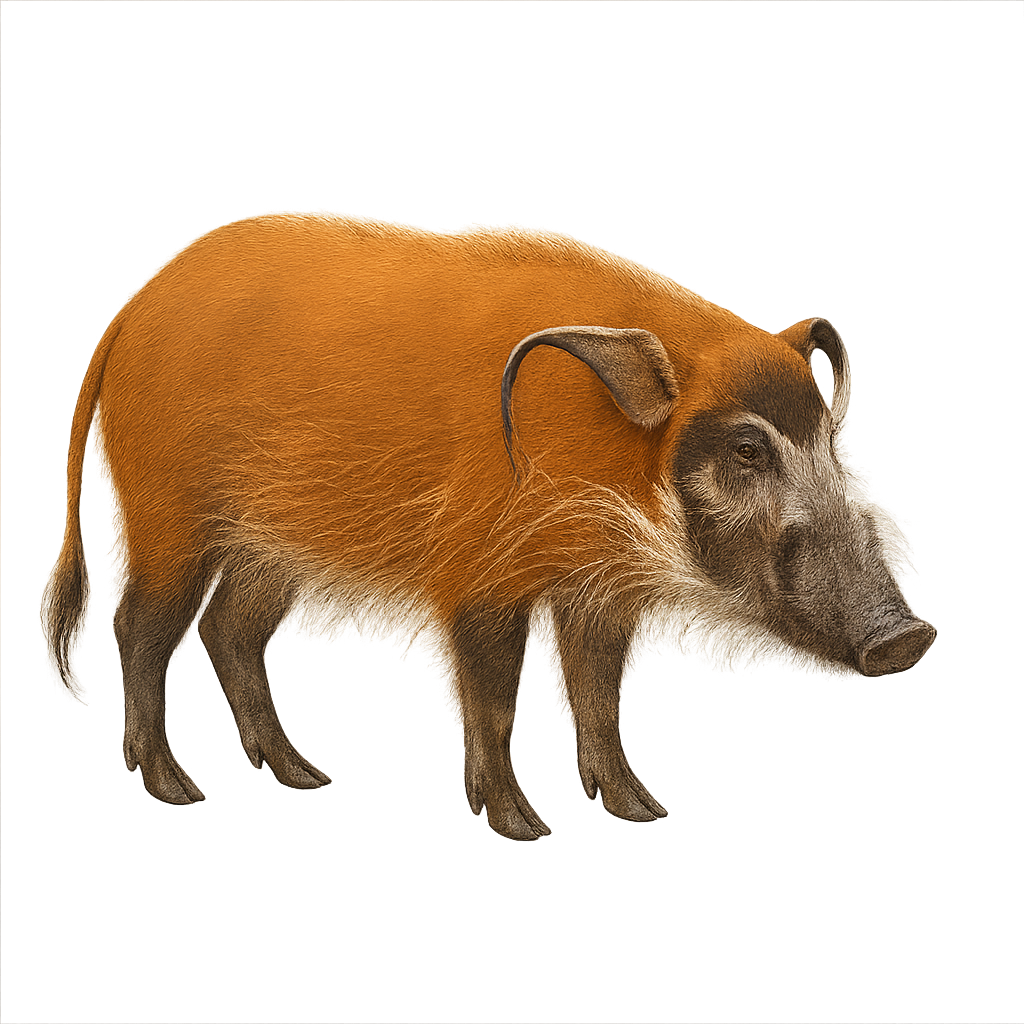Your wildlife photography guide.
Explore the red river hog in detail, study its behavior, prepare your shots.
Where to observe and photograph the red river hog in the wild
Learn where and when to spot the red river hog in the wild, how to identify the species based on distinctive features, and what natural environments it inhabits. The WildlifePhotographer app offers tailored photography tips that reflect the red river hog’s behavior, helping you capture better wildlife images. Explore the full species profile for key information including description, habitat, active periods, and approach techniques.
Red river hog
Scientific name: Potamochoerus porcus

IUCN Status: Least Concern
Family: SUIDAE
Group: Mammals
Sensitivity to human approach: Suspicious
Minimum approach distance: 10 m
Rut period: September to November
Gestation: 120-127 jours
Births: January to March
Habitat:
Tropical forests, wooded savannas, swamps
Activity period :
Primarily active during the day, with peak activity in the morning and late afternoon.
Identification and description:
The red river hog is a mammal from the suid family, recognizable by its reddish coat and ears adorned with long white tufts of hair. It is mainly found in the forests of Central and West Africa. This suid is omnivorous, feeding on roots, fruits, small animals, and insects. It lives in family groups led by a dominant male. Red river hogs are known for their ability to swim and navigate aquatic environments. Their behavior is generally suspicious of humans, although they can become accustomed to their presence in protected areas.
Recommended lens:
400 mm – adjust based on distance, desired framing (portrait or habitat), and approach conditions.
Photography tips:
To photograph the red river hog, it is advisable to use a telephoto lens of at least 400mm to capture detailed images from a distance. Look for areas where they feed or rest, often near water. Be patient and discreet, as these animals can be suspicious. Early morning or late afternoon, when the light is soft, are ideal times for photography. Use a tripod to stabilize your camera and adjust ISO settings to compensate for low light conditions.
The WildlifePhotographer App is coming soon!
Be the first to explore the best nature spots, track rutting seasons, log your observations, and observe more wildlife.
Already 1 432 wildlife lovers subscribed worldwide

